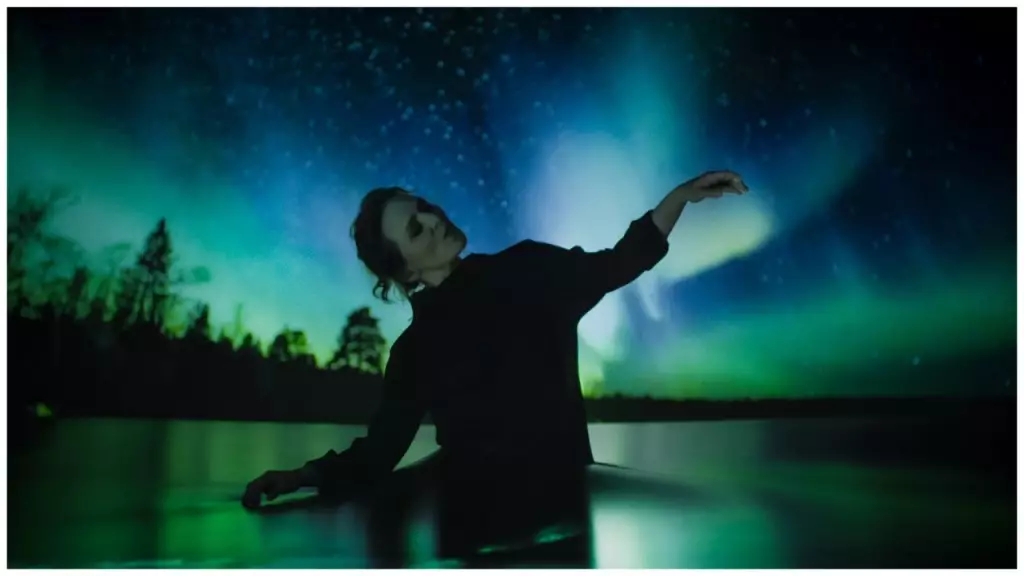The recent film about Miss Geraldine Flower emerges as an intriguing tapestry woven from pieces of her life, characterized by experimental storytelling and heightened emotional resonance. Drawing from an assemblage of personal letters, photographs, and outmoded telexes left by the late Miss Flower, this biopic diverges from convention. Instead of simply chronicling her life, the filmmakers, Iain Forsyth and Jane Pollard, choose to envelop viewers in a lyrical experience that resonates with the soul and provokes reflection.
Sophie Ellis-Bextor’s unseen voice narrates the film, setting the tone with her reflection on the intimate nature of letter-writing. According to her, these letters represent “a personal, private, permanent connection with another human being.” This sentiment illuminates the film’s core theme: the profound and often overlooked power of written correspondence. Emilíana Torrini, an Icelandic singer, passionately engages with these themes musically, echoing the narrator’s ideas by highlighting how letters have the unique ability to unlock creative potential and intimacy. Here, the filmmakers shine a light on a nearly lost art form that once flourished in a time of analogue communication.
The film showcases the transformative nature of letters in Geraldine’s life, revealing how they serve as a bridge between her past and present. The personal anecdotes articulated through the letters, juxtaposed with Torrini’s music, allow audiences to experience Geraldine’s emotional journey. The use of letters as a storytelling device fosters a sense of connection rather than fragmentation, providing depth to the overarching narrative.
Additionally, letter-writing emerges as a narrative mechanism that challenges standard biographical depictions. In a world of digital immediacy, the letters are tangible artifacts, evoking nostalgia and reflection. Geraldine Flower’s life is meticulously unpacked, but not through obligatory milestones; it’s the raw emotional texture—the details found in handwritten notes and forgotten correspondences—that breathes life into her character.
Caroline Katz’s portrayal of Geraldine in a creatively layered setting—a timeless bistro—turns the film into a metatextual exploration of self. This choice allows the audience to engage with Geraldine not just as a subject but as a collaborator in her story. The dynamics between Katz and Torrini create a spark of lucidity as both artists explore themes of identity, connection, and the passage of time. The film does not shy away from the experimental as it melds different artistic expressions—from music to choreography—promoting a uniquely enriching viewing experience.
While some might find the film’s approach esoteric, it essentially strips away the barriers between performer and subject. The audience is invited into a dialogue that transcends the limitations of traditional biopics. Torrini’s often surreal lyrics and Coyne’s unusual choreography successfully transport viewers into an otherworldly realm, illustrating how creative expression can flourish even amidst fragments of a life meticulously observed.
A particularly compelling element in the storytelling is the recurring motif of espionage and secrecy woven into the narrative. The film poses thought-provoking questions: Are the letters genuine expressions of love or intricately coded messages hiding a deeper meaning? This undercurrent of mystery is intoxicating, underscoring the film’s central paradox: the desire to know yet the necessity to retain some semblance of ambiguity. The allure lies not only in the answers but in the questions themselves, hinting at broader truths lurking beneath surface-level interactions.
Ultimately, Miss Geraldine Flower’s life and work illustrate how creativity transcends the barriers of time and individuality. The film captures her essence—a complex narrative that intertwines love, loss, and the yearning for understanding. As audiences immerse themselves in this artistic biopic, they are reminded that the tapestry of existence is often narrated through the most intimate acts of communication, underlining our universal longing for connection.
This cinematic homage leaves an indelible mark, transforming Geraldine Flower from obscurity into a compelling figure of fascination, encouraging viewers to ponder their own stories and the fragments of lives shared through the written word.

